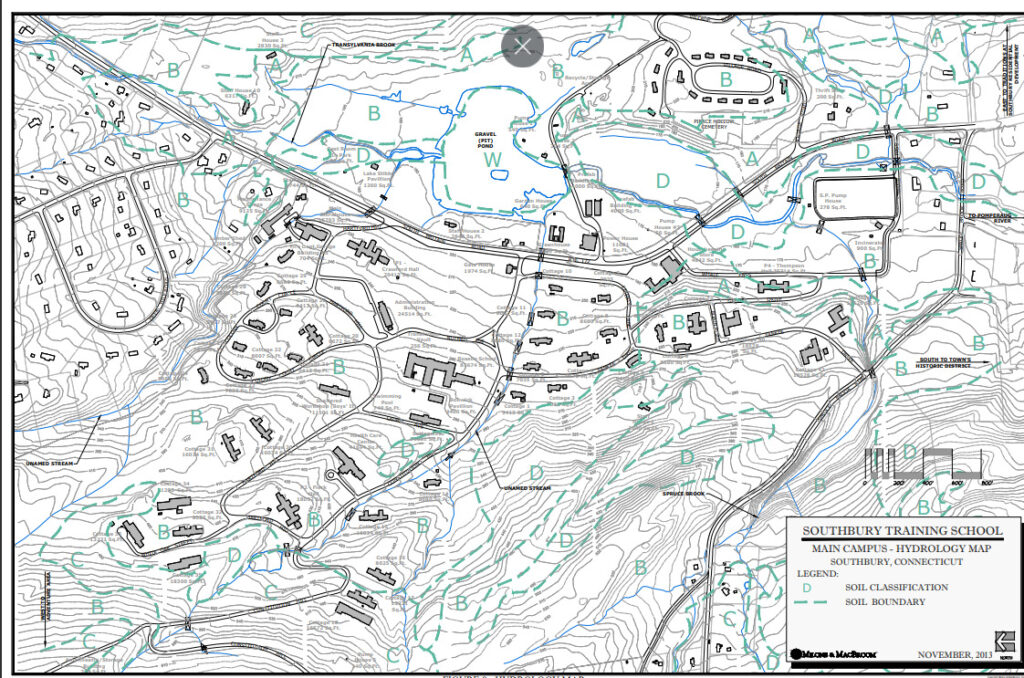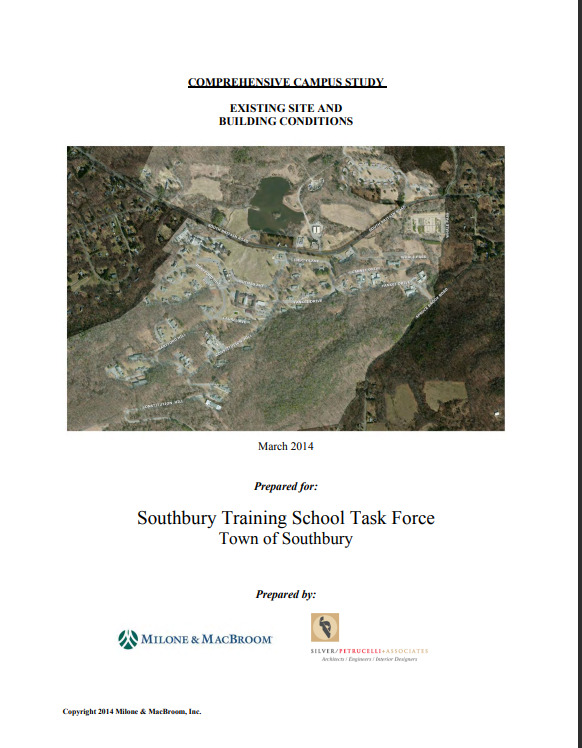
(This is one of three blogs on the Southbury Training School. The others cover the Southbury Farmlands and the Personnel Village.)
Introduction
The Southbury Training School (STS) is the largest area in the 69th House District with an uncertain future. Due to a court decree, the school is set to close when the last current resident leaves or dies. While First Selectman of Southbury (2011 – 2015) I worked with State and local partner to forge a path forward for STS. Unfortunately, little progress has been made in the years since. If elected as your State Representative, I plan to change that.
In this blog, I provide a brief background about STS, a summary of my past efforts as First Selectman regarding the campus (administration buildings, cottages, support buildings and infrastructure) and my plans for what I will do if elected.
Background
Initial groundbreaking for the Southbury Training School (STS) was in 1937 after the state bought several adjacent farms totaling 1,700 acres. It was sized to accommodate about 2,300 residents and employed about 2000 people.

The institution was based on progressive ideas at that time regarding people with intellectual developmental disabilities (IDD). Instead of an institutional setting with large wards and a approach based on “warehousing”, residents lived in cottages in groups of about 30 people and were given training to enable them to be employed outside of STS. There are about 70 cottages and administrative buildings and extensive infrastructure: roads, pool, gardens, water and sewer system, power plant, green houses, etc. covering about 400 acres.
In 1986, after a series of court cases and legislative initiatives, the decision was made to no longer admit new residents. STS would close by attrition as residents died or moved to other facilities like Group Homes. The need for training was diminished. In addition, an Ombudsman was put in place to make sure that the STS facilities and the operation were brought up to standards. The result was that STS became a model of best practices regarding geriatric care for those with IDD. The life expectancy of residents increased dramatically. Expectations of when STS would finally close kept changing as a result of these improvements.
Currently, there are about 100 residents who are in a few co-located buildings on a small portion of the land. In addition, hundreds of people with IDD receive day services at STS like their specialized dental facilities.
The conventional wisdom before and after I became First Selectman was that: a) this is State land and b) it is up to the State to chart the future.
However, I and some others saw it differently. We believed that we should not wait until the last person left before the work of planning for the future of STS. More importantly, we believed that our towns (Southbury and Roxbury) should play an active and direct role in planning that future.
The State legislature saw the cost of operating STS as a liability and there were calls to close it immediately as a cost saving step. These calls were typically made without thinking of how the current residents would fare and the related cost to the taxpayer. (All estimates were that it would be more costly to taxpayers!)
Instead of a liability I saw that STS had many assets that should be recognized:
- Numerous redesigned buildings that were state-of-the-art for people with IDD,
- Staff trained and committed to serving people with IDD and,
- Community that appreciated and accepted this beloved institution.
My Approach as First Selectman
Within a month of my election in 2011, there was a meeting at STS with representatives of the Governor’s office, the Director of the Department of Development Services (DDS), the director of STS, the director of the Department Economic and Community Development (DECD) and representatives of the Department of Agriculture. We agreed to establish a Governor’s task force with senior members of the Governor’s cabinet to analyze, discuss and chart a future for the STS campus. I would be a representative on the task force along with two other people from the area and one representative of the STS Board of Trustees
Once established, the group met monthly. Its accomplishments included:
- The first comprehensive inventory of all the buildings and infrastructure and an analysis of the condition of the unused buildings was published. Comprehensive Campus Study: Existing Site and Building Conditions
- A Phase 1 environmental assessment was completed of the land which indicated there were no major contamination issues (unlike Fairfield Hills in Newtown).
- A decision was reached that since the remaining residents only needed a small number of buildings, we could begin to use the other areas for new projects.

- Several possible uses were identified in conjunction with DECD.
- Millions of dollars were spent to remediate buildings that contained asbestos. This needed to be done whether the buildings were repurposed or demolished.
What remains to be done?
In the spring of 2015, a new commissioner for DDS was appointed. She was reluctant to move forward with the ideas being discussed by the Governor’s Task Force before she had a more complete understanding of STS and its potential. This slowed down work (not unusual in any bureaucracy). I got to work on bringing her up to speed on what had been accomplished.
By October 2015, she was ready to move forward. However, a newly elected Southbury Board of Selectmen began in December 2015. They demonstrated no interest in engaging with the Governor’s Task Force. Without a local advocate for forging a future for STS, the task force was abandoned.
If elected, I will work to re-establish the Governor’s Task force to update the inventory and assessment of existing buildings and infrastructure (now out of date) and create a plan for how to manage STS’s campus area.